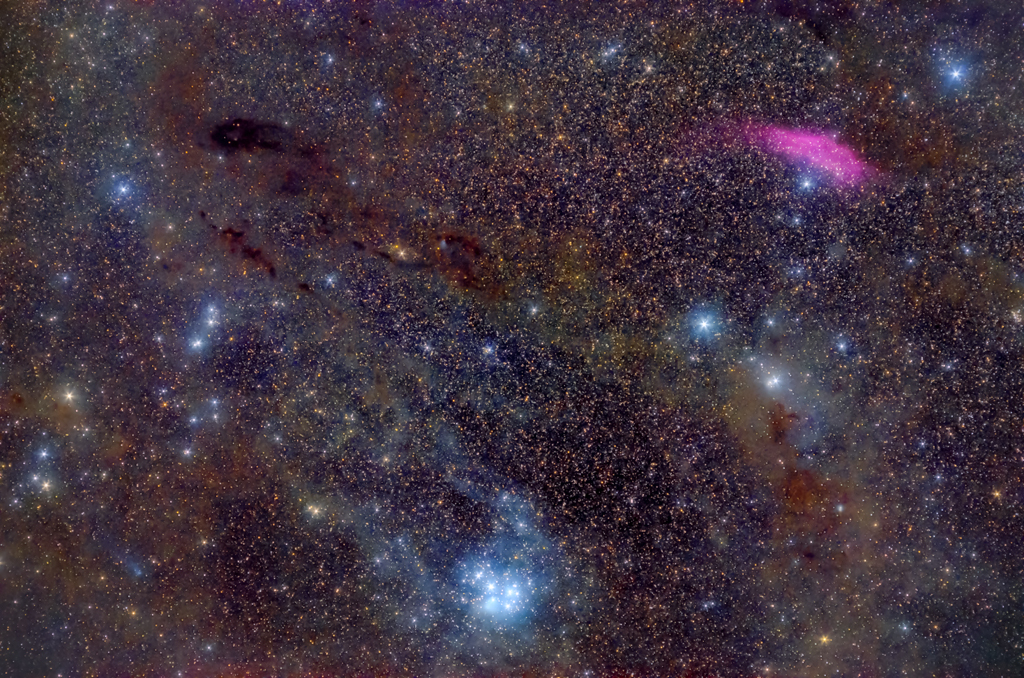
Comet PanSTARRS is near the Edge


Media accreditation now is open for the launch of the next SpaceX delivery of supplies and equipment, including science investigations, to the International Space Station, currently targeted for no earlier than April.
from NASA http://ift.tt/2BvIaPL
via IFTTT![]()

 Loaded with three tons of food, fuel and supplies, a Russian Progress cargo spacecraft is scheduled to launch at 3:58 a.m. EST (2:58 p.m. Baikonur time) Sunday, Feb. 11, to resupply the International Space Station.
Loaded with three tons of food, fuel and supplies, a Russian Progress cargo spacecraft is scheduled to launch at 3:58 a.m. EST (2:58 p.m. Baikonur time) Sunday, Feb. 11, to resupply the International Space Station.
February 07, 2018
via NASA http://ift.tt/2EaWkZm![]()
 The European Space Agency’s Columbus module celebrates 10 years of science on the International Space Station.
The European Space Agency’s Columbus module celebrates 10 years of science on the International Space Station.
February 07, 2018
via NASA http://ift.tt/2nJ2424![]()
On Tuesday, Feb. 6th at 3:45 PM ET, Falcon Heavy successfully lifted off from Launch Complex 39A at Kennedy Space Center in Florida. Falcon Heavy is the most powerful operational rocket in the world by a factor of two, with the ability to lift into orbit nearly 64 metric tons (141,000 lb)–a mass greater than a 737 jetliner loaded with passengers, crew, luggage and fuel.
Falcon Heavy’s first stage is composed of three Falcon 9 nine-engine cores whose 27 Merlin engines together generate more than 5 million pounds of thrust at liftoff, equal to approximately eighteen 747 aircraft. Only the Saturn V moon rocket, last flown in 1973, delivered more payload to orbit.
You can watch a replay of the test flight below, as well as a replay of the live view of Starman in orbit.Find out more about the Falcon Heavy test launch in our press kit.
Quelle: http://www.spacex.com/news/2018/02/07/falcon-heavy-test-launch
Sixty years ago, on January 31, 1958, the First Explorer was successfully launched by the Army Ballistic Missile Agency on a Jupiter-C rocket. Inaugurating the era of space exploration for the United States, Explorer I was a thirty pound satellite that carried instruments to measure temperatures, and micrometeorite impacts, along with an experiment designed by James A. Van Allen to measure the density of electrons and ions in space. The measurements made by Van Allen’s experiment led to an unexpected and then startling discovery of two earth-encircling belts of high energy electrons and ions trapped in the magnetosphere. Now known as the Van Allen Radiation belts, the regions are located in the inner magnetosphere, beyond low Earth orbit. Explorer I ceased transmitting on February 28, 1958, but remained in orbit until March of 1970.
January 31, 2018
via NASA http://ift.tt/2Gxjab3![]()
 Sky-gazers are in for a rare treat Wednesday, Jan. 31, when three celestial events combine to create a super blue blood moon. NASA Television and the agency’s website will provide live coverage of the celestial spectacle beginning at 5:30 a.m. EST.
Sky-gazers are in for a rare treat Wednesday, Jan. 31, when three celestial events combine to create a super blue blood moon. NASA Television and the agency’s website will provide live coverage of the celestial spectacle beginning at 5:30 a.m. EST.
Published January 29, 2018
Read more from NASA![]()
Visualization of the August 21, 2017 Total Solar Eclipse
On August 21, 2017, the Earth will cross the shadow of the moon, creating a total solar eclipse. Eclipses happen about every six months, but this one is special. For the first time in almost 40 years, the path of the moon’s shadow passes through the continental United States.

Deployment of the Space Station’s Roll Out Solar Array Experiment
Over the weekend of June 17-18, engineers on the ground remotely operated the International Space Station’s Canadarm2 to extract the Roll Out Solar Array experiment from the SpaceX Dragon resupply ship. The experiment will remain attached to the Canadarm2 over seven days to test this advanced, flexible array that rolls out like a tape measure.
June 20, 2017
via NASA http://ift.tt/2tp28oW ![]()